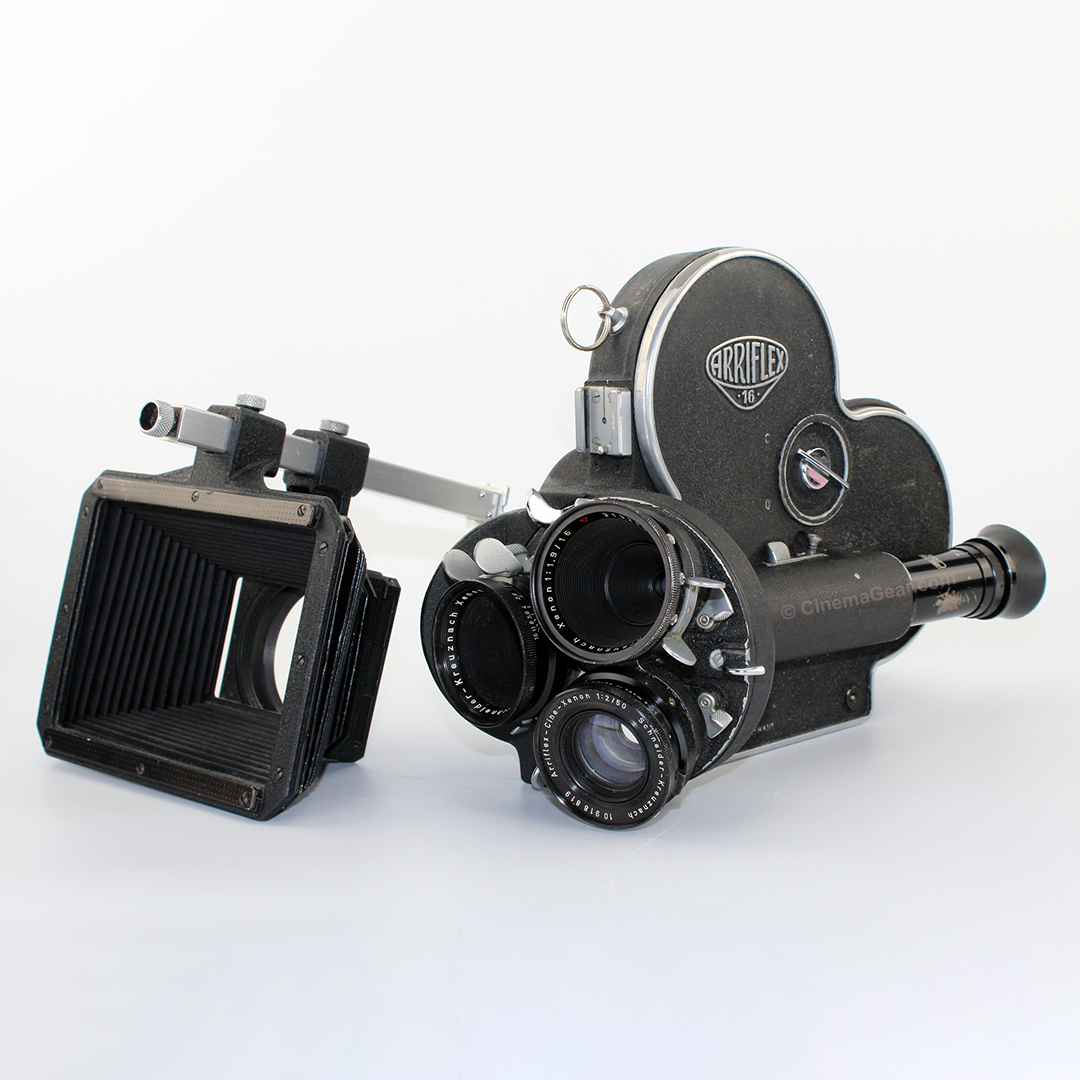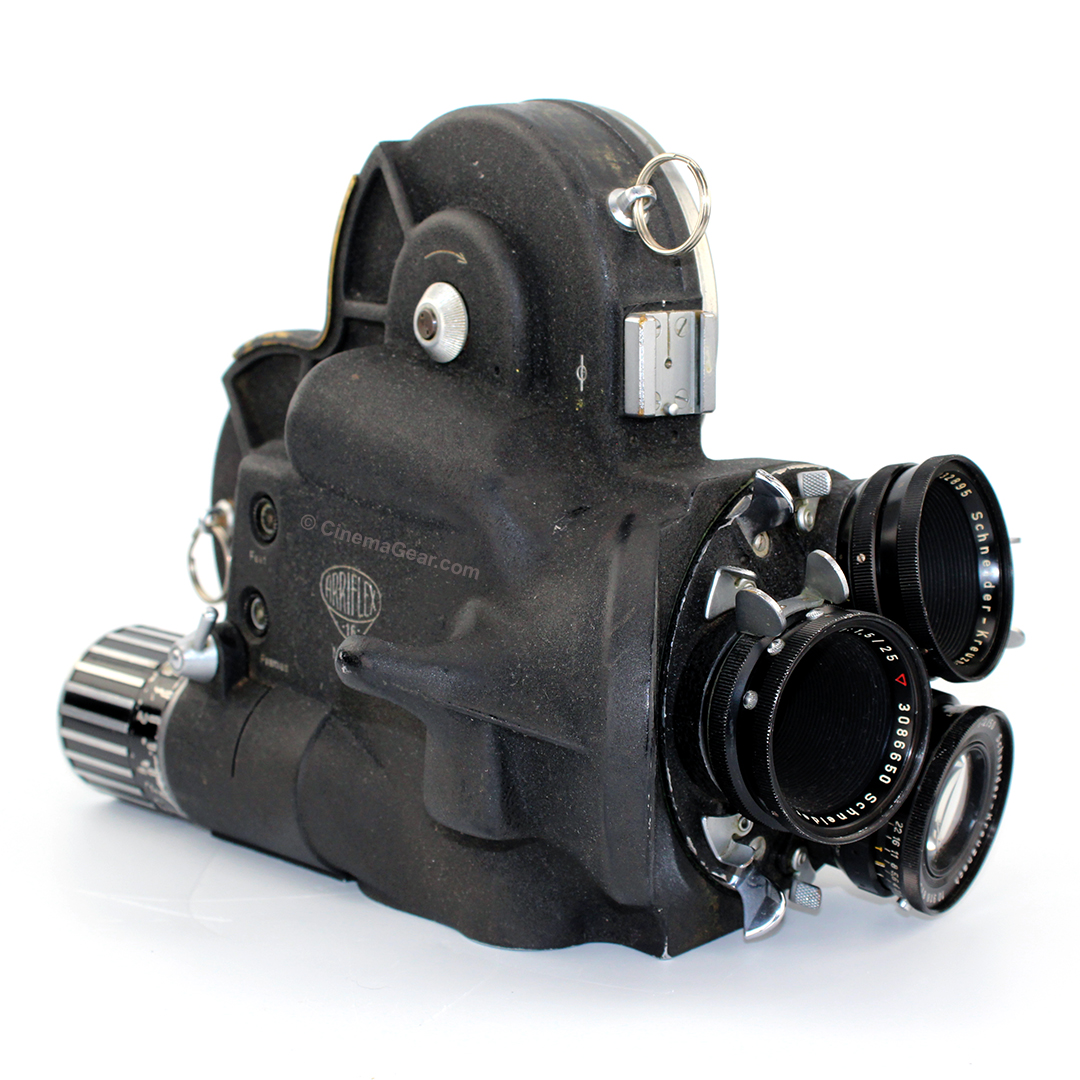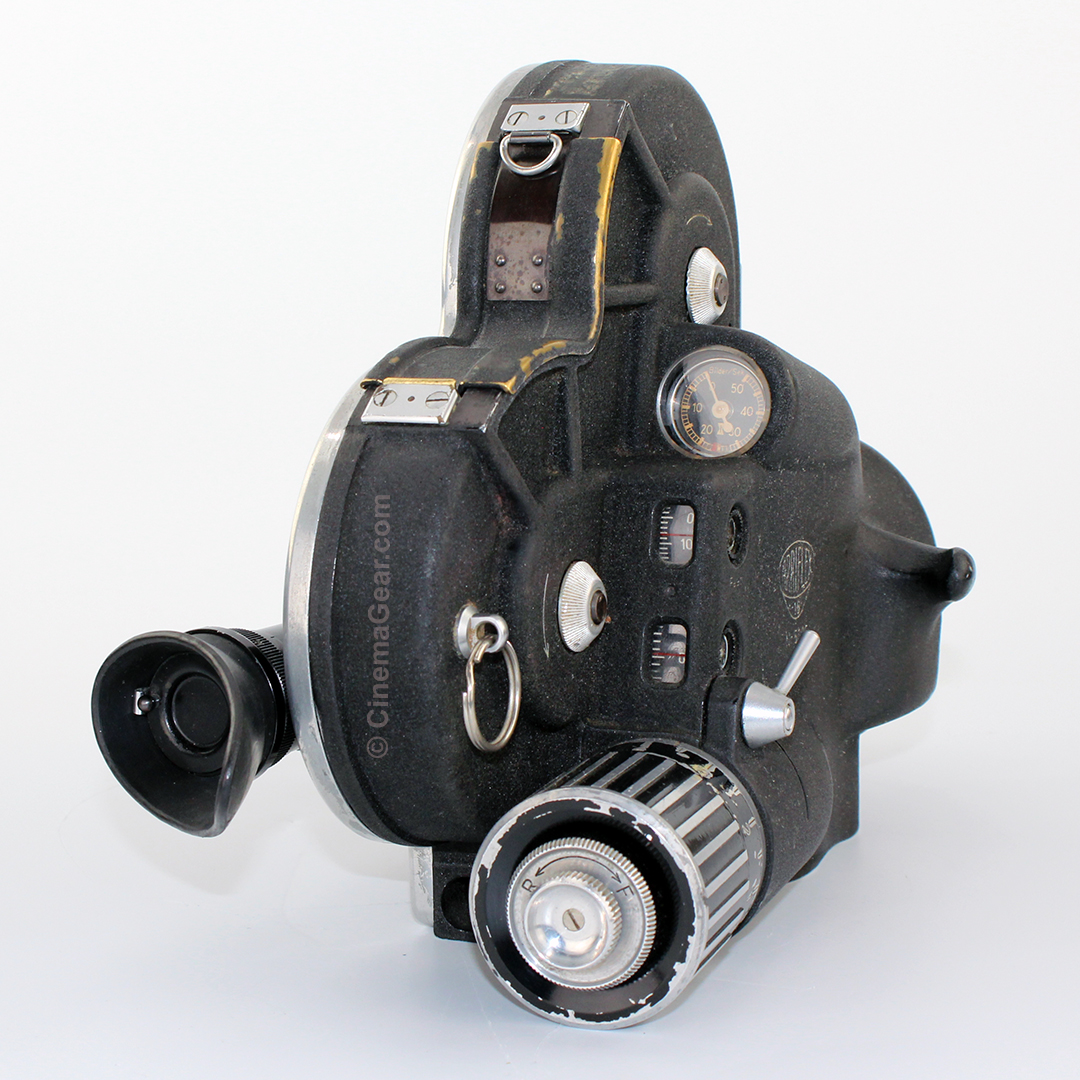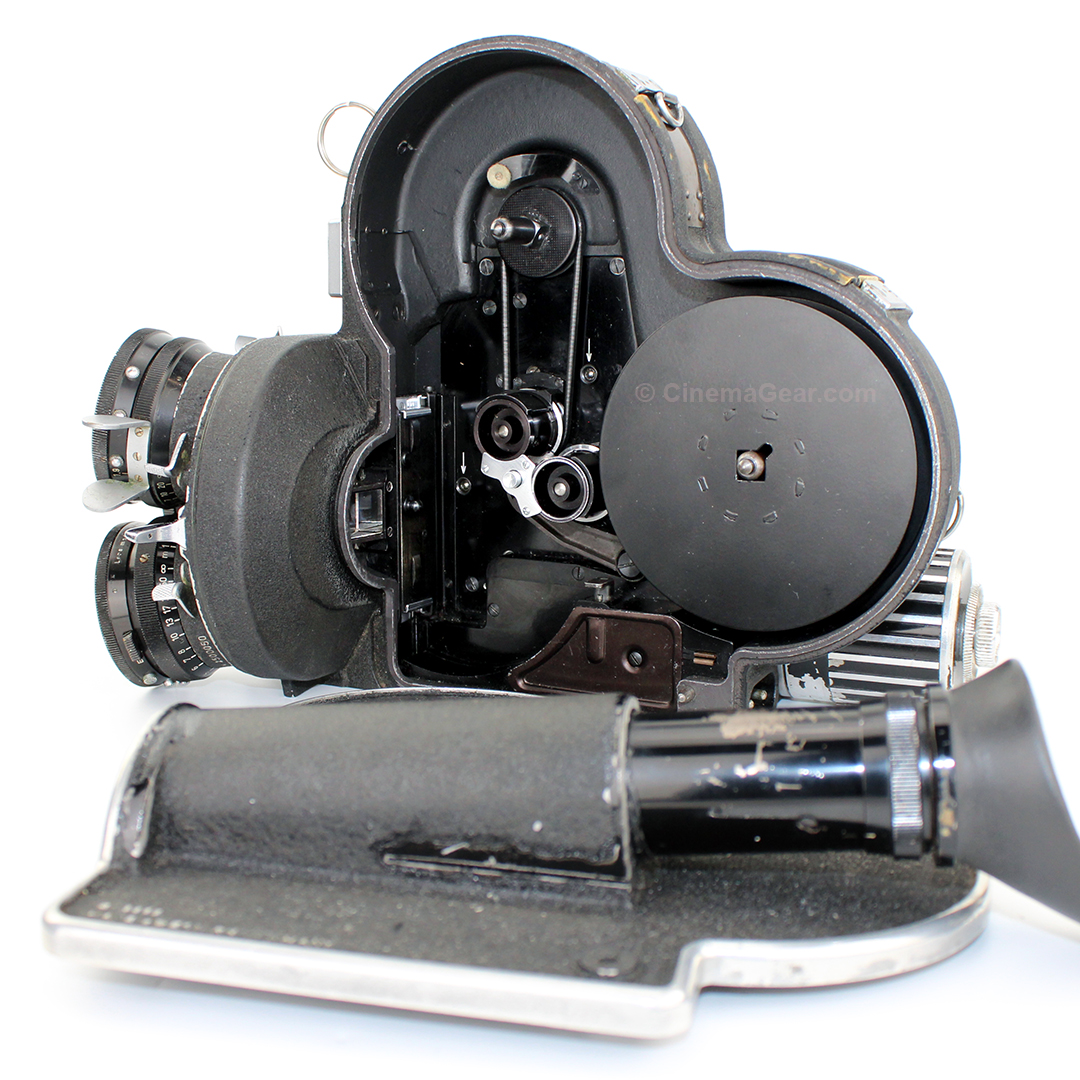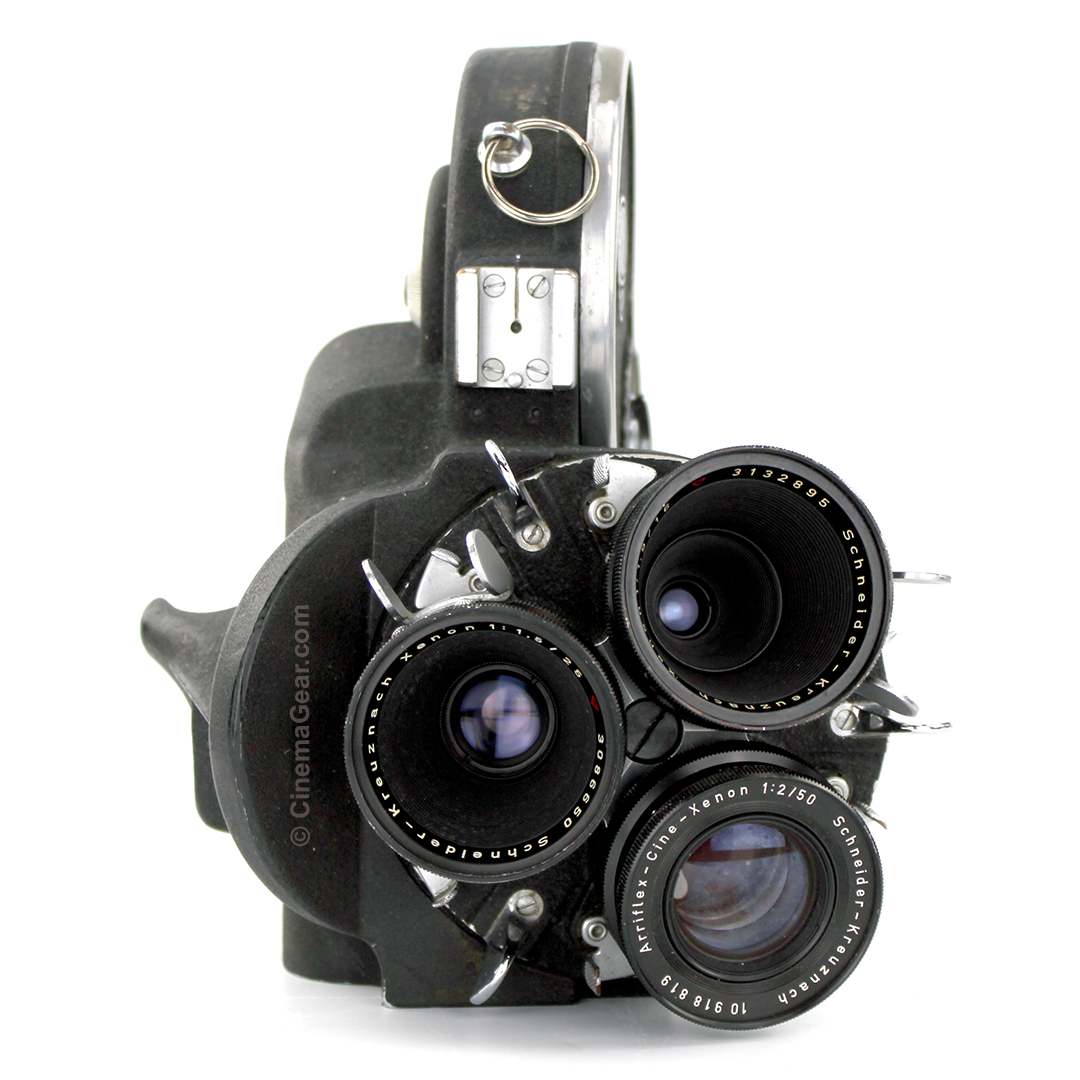
Arriflex 16 S
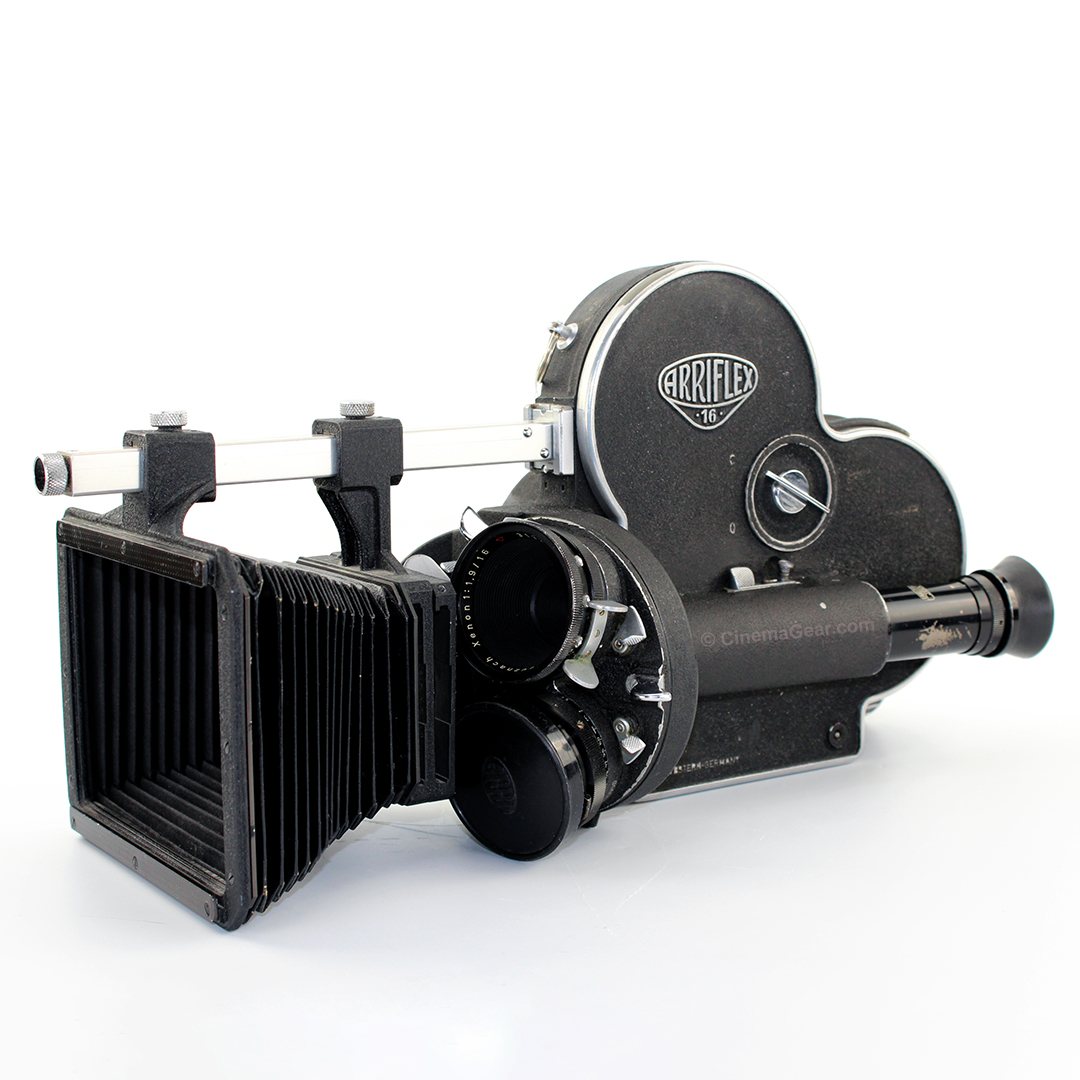
$1,950
Item #C14543
This ARRI 16 S camera comes from the collection of five-time Emmy Award winning photojournalist, author, and owner of video rental firm Videosmith, Steven Trent Smith. This early ARRI 16 S, variously nicknamed the “flat door ARRI”, features the older style viewfinder optics and door castings. You can see in later examples of the ARRI S/ST that the camera door housings were updated to accommodate the improved optical viewfinding system and eyepiece. This camera comes complete with three Schneider Cine Xenon lenses, one 16mm f1.9, 25mm f1.5, and 50mm f1.2, along with an ARRI matte box, and a variable speed motor. The camera has been cleaned, lubricated, and serviced. The flange focal depth was checked and the camera was run with 100’ of film. An excellent addition to any filmmaker’s kit, or to your classic camera collection.
When it was introduced in 1952, the ARRI 16 S quickly became one of the most popular 16mm, full-featured, hand-holdable, spinning mirror reflexed production cameras on the market. Touted for its rugged construction and intuitive, reliable operation, the ARRI 16 was most notable for being the first 16mm spinning mirror reflex camera with an exceptionally bright viewfinder. Other key features that made this camera one of the most innovative of its time include a pin-registered film transport, easily interchangeable motors, the ability to shoot 100’ internal daylight loads or with a 400’ external magazine, a 3-lens divergent turret that allowed the use of telephoto and wide angle lenses on the camera at the same time, and its compact and ergonomic design that made the camera ideal for handheld or tripod-mounted cinematography. The popularity of the ARRI S camera series inspired the creation of numerous accessories to complement this versatile camera, making it suitable for both sync sound and MOS productions. These cameras found wide use in newsgathering, documentary filmmaking, industrial films, television commercials, and independent features and short subjects of all types.
Photo Gallery:
A Brief History of ARRI
ARRI was founded by August Arnold and Robert Richter in Munich, Germany in 1917. Friends from school, Arnold and Richter already had some experience in the motion picture business, having worked as cameramen and lab technicians. They began their business by building a film copying machine using parts out of an old film projector they purchased secondhand. While sales of their machine were going well, both men continued their work in many aspects of the movie business, including as cinematographers, producers, and lighting technicians. In 1918, they worked on their first film with director Fred Stranz, a western called "Der Schwarze Jack" (or Black Jack).
By 1920 they were producing their own short films, and using the profits to improve their printers. In 1924, Arnold began designing their first motion picture camera, the KINARRI 35, as well as their first lighting equipment. This camera was completed by 1925 and Arnold sent it to Richter in the United States where he had gone to learn about the American film business. Their second camera, the TROPEN, which featured an adjustable rotary shutter, was produced during this time as well. In 1928, the KINARRI 16 was developed for an amateur filmmaking audience, along with a 2nd more advanced model that featured an internal spring wind mechanism. In 1934, with sound films now dominating the market, ARRI developed a portable sound camera, but patent issues prevented it from being sold commercially. Success came soon after though.
In 1937, the ARRIFLEX 35 was released, a revolutionary handheld spinning mirror reflex 35mm motion picture camera that featured a spinning mirrored shutter and a parallax-free erect image viewfinder. This design, which saw many innovations and updates after its introduction, was produced until 1978. The Arriflex 35 is a World War II vintage camera, and saw use by the German military during the war. Some early examples of the ARRI 35 were captured by American troops and brought back to the US. In 1946, ARRI introduced the next generation of this camera, the Arriflex 35 II. So influential was the Arriflex 35 series of cameras, that it was awarded an Academy Award of Merit in 1983 for "the concept and engineering of the first operational 35mm, hand-held, spinning mirror reflex, motion picture camera."
Sources:
- "The New Arriflex 16SR Camera" American Cinematographer, (December 1972): 1364-7, 1416-17.
- "SMPTE Equipment Exhibit: Arriflex 16SR Camera Since Photokina 1972" American Cinematographer, (December 1973): 1548-9, 1587.
- "New From Arriflex" American Cinematographer, (December 1974): 1416-14, 1468-9.
- Lightman, Herb A. "Filming The Olympics" American Cinematographer, (April 1976): 396-9, 434, 438-41, 448.
- Jon Fauer, "The History of ARRI in a Century of Cinema", ARRI, updated 2021, View source.
- "100 Years Inspiring Your Vision", updated 2017, View source.
- Jorge Diaz-Amador, "Camera Profiles - Arriflex 35-II Series," updated 2020, View source.
- Jan Heugel, Arnold & Richter Cine Technik GmbH & Co. Betriebs KG, email message to owner, November 12, 2019.
